We paddled that first evening just through the edge of darkness, the sliver moon and Jupiter accenting the evening sky. In the distance a barred owl called. Just the day before we’d driven to Flamingo at the southern edge of Everglades Nat’l Park, crossing Rock Reef Pass, elevation 3 feet, along the way.
Other instructors sometimes question why the Everglades is such an appealing place to instruct. Certainly it does not hold the grand peaks, nor high mountain passes of the West, the beauty often lies in the subtlety. This trip though was to prove just what makes the Everglades so magical. Whether manatees, sharks, or roseate spoonbills, we saw wildlife in the waters and in the skies above every single day.
I was instructing an Outward Bound Course with students from William Jewell College. It’s the longest course we run in the Everglades and friends had highly recommended working this course due to the enthusiastic nature of the students and the ability to paddle the length of the Everglades Nat’l Park. I was not disappointed.
At Flamingo we were greeted by several manatees and the following day at East Cape Sable a manatee did as complete a breach as a manatee can right off the ocean’s shore.
A most memorable day was paddling through Little Sable Creek. There’s a small lake, about 2 feet deep, along the way and it was quite serene. A couple of wood storks soared overhead, wings outstretched, white with black markings, beautiful and graceful in flight. As we began to paddle across that lake we spotted the fin of a shark moving slowly through the water. Suddenly there were 3-4 sharks and they began a feeding frenzy. Their movements just beneath the water’s surface were abrupt and fierce-some. We were soon surrounded by the quaking waters. Somewhere deep in the human primordial mind there lies the thought that this feeding frenzy could soon include us. When 3 sharks bumped the bottom of our canoe my co-instructor, Josh Harris, wryly replied, “We need a bigger boat.” The sharks jetted ahead of us for a short time and then receded back to the confines of the lake where the fish were plentiful. It was certainly one of the best wildlife encounters I’ve experienced.
On the fourth day we left Northwest Cape and the waters were at a moderate chop, the paddling a challenge. In the midst of it we saw a sea turtle curiously poking it’s head above the surface, checking out those passing through her territory. When muscles grew fatigued we were joined by dolphins frolicking nearby, enough to give us renewed energy. We stopped in a large bay for lunch and along the surrounding hurricane-fatigued trees rested cormorants and anhingas.
We entered the Little Shark River during the late afternoon when the afternoon light was at it’s crest. Ibis’ made their way to evening roosts and brown pelicans soared somewhat awkwardly by. We paddled to the islands at the mouth of the Ponce de Leon Bay as darkness fell. The Gulf waters were so smooth that night that sea and horizon merged into one, as though crossing to Valhalla. The planet Jupiter once again cast its glow upon the sea.
The group was to paddle to the Little Broad River for that day’s journey. Towards New Years the group was lost in another river system south of the Little Broad. It was wide enough, but it wasn’t the Broad. With the stroke of midnight approaching we found a small mud flat upon which to celebrate the dawn of 2012, but the group were still in literal, and perhaps metaphorical, darkness. Persistence was something this group had in plenteous supply though and sometime after 2am we paddled into the mouth of the Little Broad River. We found a back bay upon which to “board-up,” where we build a raft out of our canoes and a wooden platform on top of them upon which to cook and sleep. As we approached the spot to board up for the night a group of mullet, a local fish, began jumping out of the water and, low and behold, right into our boats! So along with spaghetti, we ate a bit of freshly cooked mullet that night.
We awoke on the first day of the new year due more to the warmth of the sun than to fully rested bodies, but in reality we were just getting started. Wanting to give the group a sufficient challenge we had them paddle through the Rodgers River. At the entrance our student Nick pointed out a flock of roseate spoonbills resting in a mangrove so we paddled in silence for a time, just taking it all in. As we paddled yet another dolphin fed nearby. We entered the Rodgers River Bay at dusk and the students navigated flawlessly along the back bays, catching the Lostman’s River during flood tide and quickly riding it out to First Bay. For the second time in as many nights we watched the moon set.
On the 2nd morning of the year, as we paddled out to the gulf from First Bay we once again watched sharks feeding at the river’s mouth. Close to shore dolphins and brown pelicans fed. It was idyllic once again. We made our way to Highland Beach and put the students out on solo (a time set aside for reflection) and the winds came, as the weather radio had predicted. The winds were fierce and the students huddled in their newly made shelters. On the evening of the 3rd day of 2012 we took the students off of solo and sat around the fire telling stories. Later that night I briefed the route that we’d take for their final expedition.
The Epic Day.
On an expedition of any length there is always the epic day. Ours would prove to be the 4th day of 2012. It will forever remain etched in our minds. It was the day we attempted to paddle Charley’s Creek. We awoke around 4:30am on what would prove to be the coldest day of the winter so far. We wanted to catch the 10:58am high tide and ride it all the way into Charley’s Creek. That meant loading the boats from Highland Beach at low tide, which meant walking 100 yards through ankle deep water in order to do so. Though a challenge, we were paddling away at 6:52am.
Then the winds came. We were hoping the early start would allow us to beat the winds up the coast and to the mouth of the creek, but fate was not to have it that way on this day. It took seemingly forever just to reach First Bay and then the strong northeast winds attempted to blow us out to sea. It took another hour of solid paddling just to get back into the leeward side of the wind. By the time we reached the mouth of Charley’s Creek, high tide had come and gone.
With a low tide of 3:40pm and a coming high of 9:27pm, we were set to catch the highest tide of the day. We reached Pelican Bay right at dusk and it seemed reminiscent of a National Geographic Magazine article as roseate spoonbills wandered in the shallow waters beneath the shell-pink sky.
The chart doesn’t show the creek connecting all the way through to the back bays, but satellite imagery shows a clear connection beyond Pelican Bay. So it would certainly be passable at high tide, unless the strong northeast winds had been blowing for a third day, which of course they had. Strong winds are known to blow all of the water out of the creeks. The high tide never did reach us in Pelican Bay. Instead we were stuck in a thick sludge of mud.
It took a lot of work just to move the canoes several hundred yards. Sounds of “1,2,3 yyyhhhaaa” could be heard resounding through the evening as students worked in tandem, using paddles as poles to move along in the muck. We decided to wait for the waters to come, we only needed a couple of inches to get the canoes to float once again. The tide was bringing water into Pelican Bay, but it was spread in a thin sheet amongst such a vast area that the muck only seemed to thicken with the rising water.
Most all of us fell asleep right in our canoes awaiting the water, but we then had to battle the cold as dusk turned to darkness. We decided to cook right in the boats. Macaroni and cheese seemed the perfect answer to the cold night, but as is the case with most epic days something else was bound to go wrong. We carry lots of different powders into the backcountry and after that first bite of what was to be macaroni and cheese, we learned that instead of cheese, the cornbread mix had been added in. We had little choice but to eat it anyway.
Then came acceptance. The waters would not be high enough to continue along Charley’s Creek and we paddled back amidst the mangrove tunnels to the gulf. For the third time in as many nights we watched the moon set.
We paddled on “the outside” the following day, past New Turkey Key and on into Rabbit Key Pass. We began the paddle into Rabbit Key Pass right at dusk, this time we catching the high tide just right and riding it through the night into Chokoloskee Bay and on up the Turner River. A good day, we ate dinner and watched the moon set once again.
Morning broke, as it has countless times throughout the epochs, and brought with it one of the finest dawns I’ve seen in the Everglades. It was an ample metaphor. No matter how tough things may get, when you dig deep, you find out that you’re made of more than you ever imagined. This group from William Jewell faced some tough challenges, gave everything they had to face them, paddled through many late nights, but awoke, perhaps a bit stronger, to a new dawn.
Follow @nomadruss
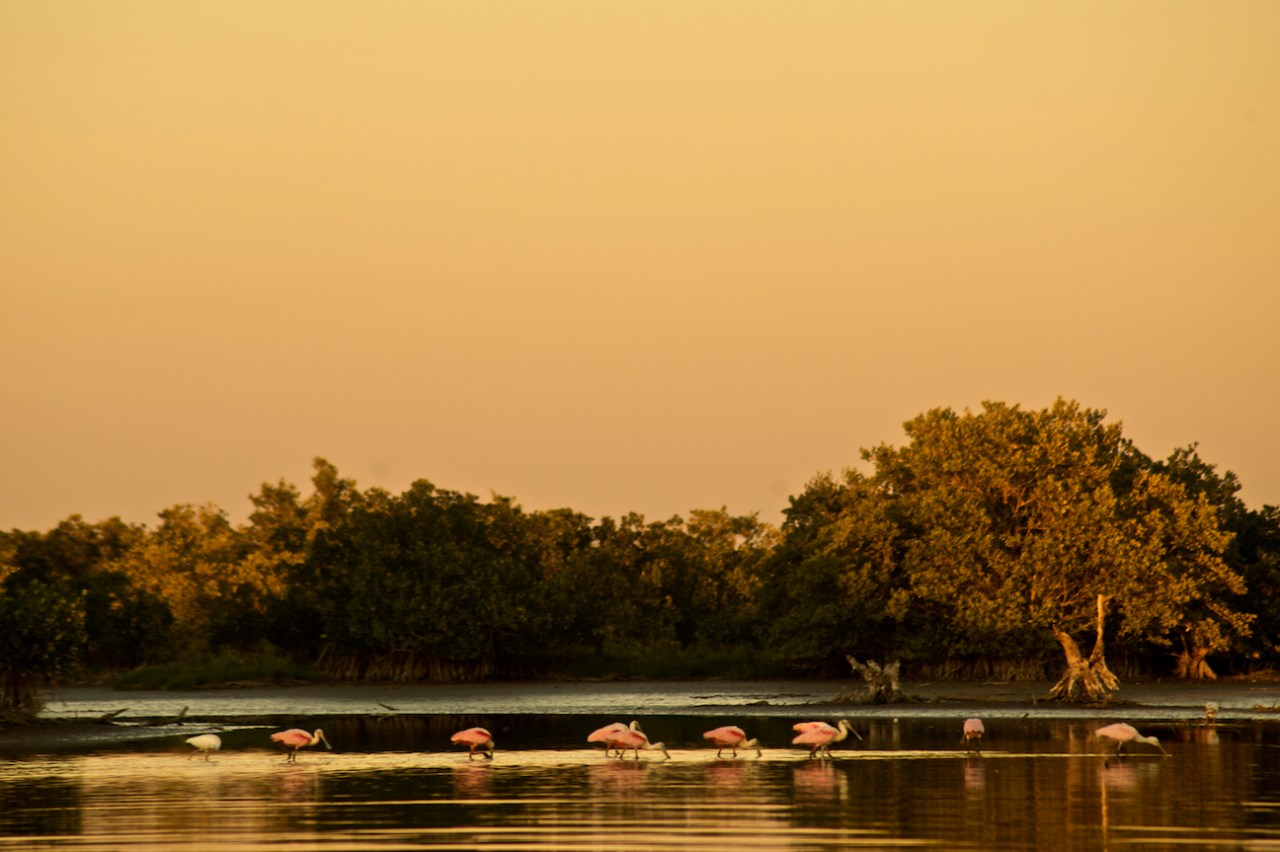
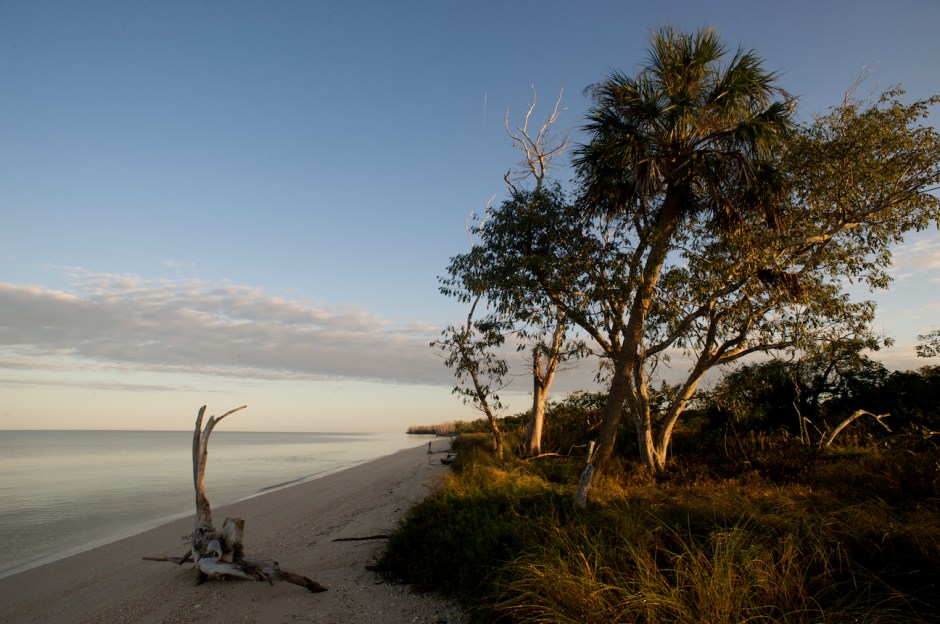
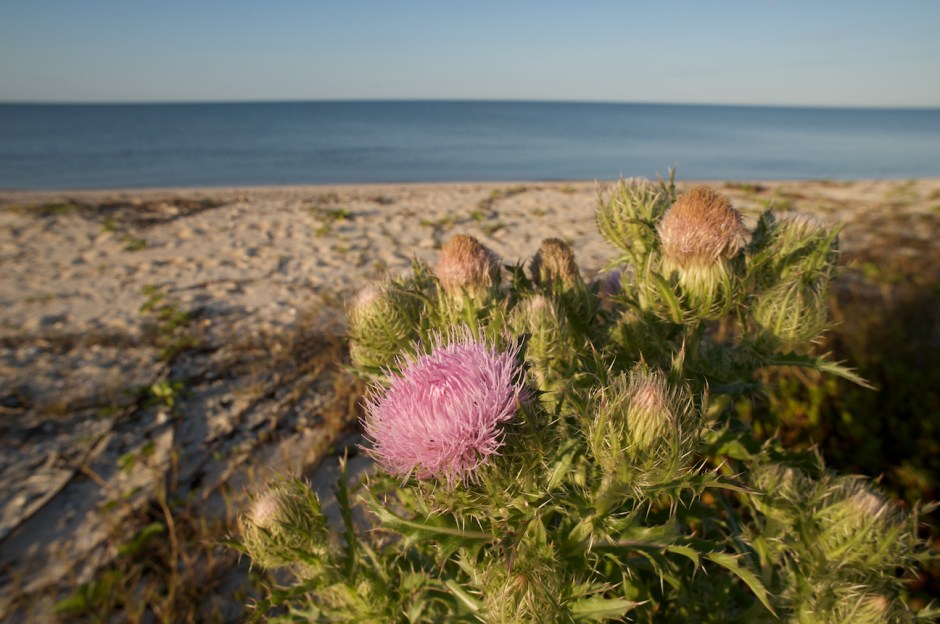
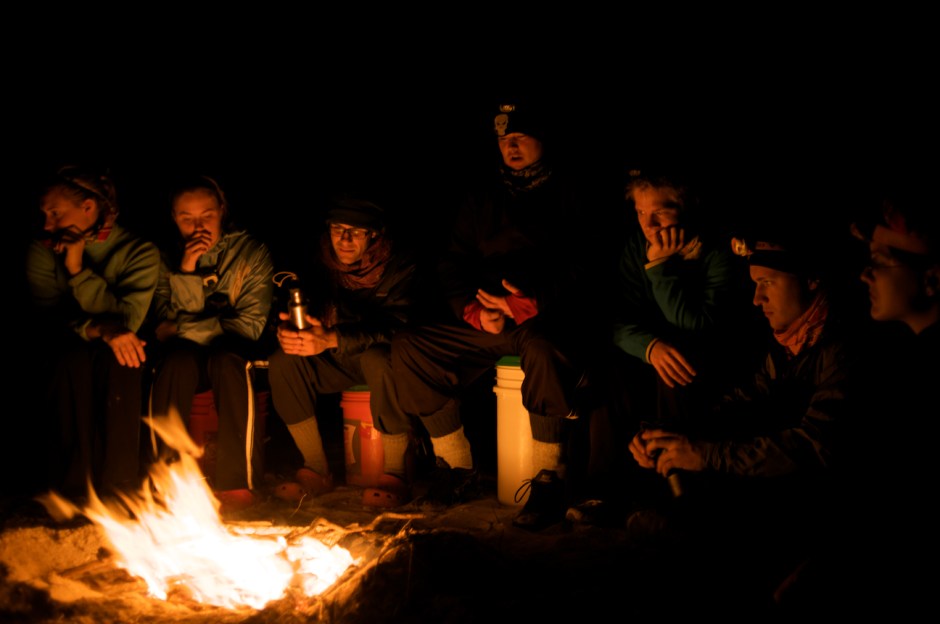
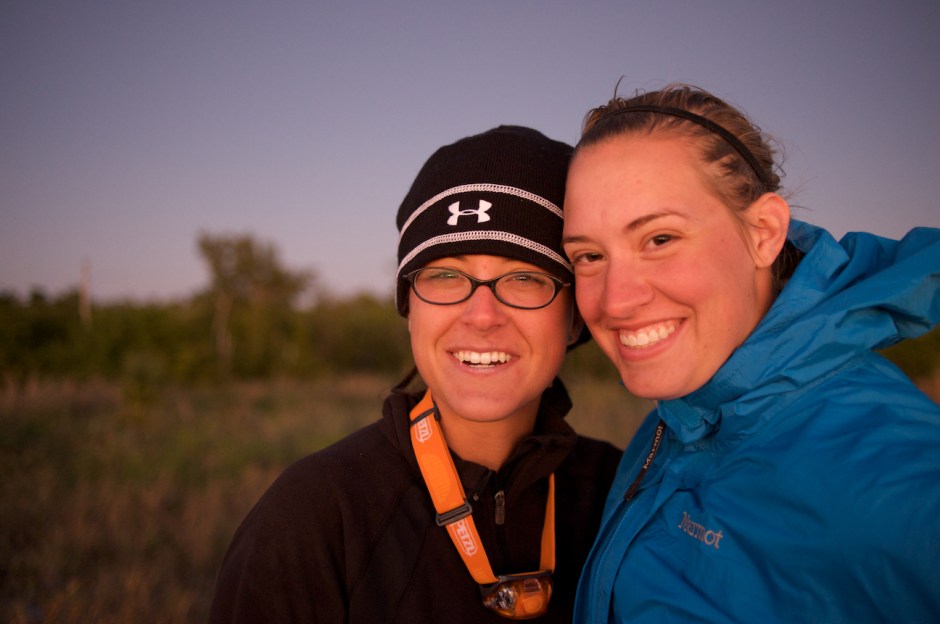
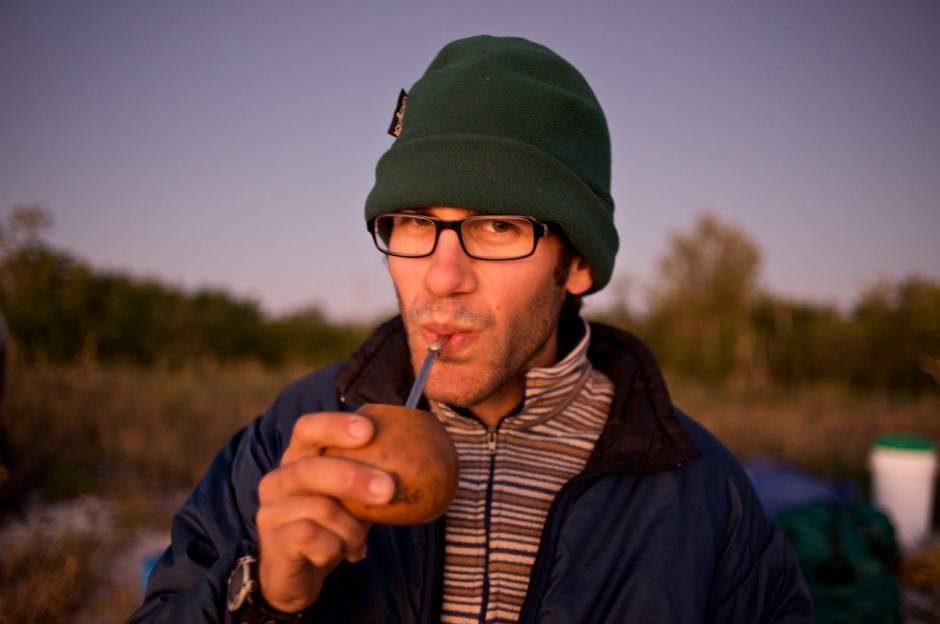
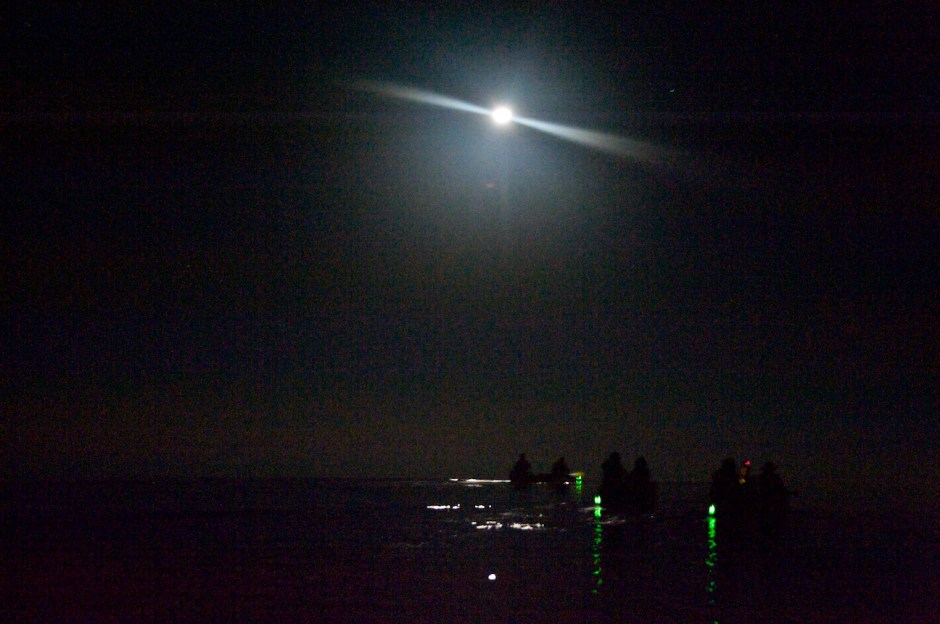
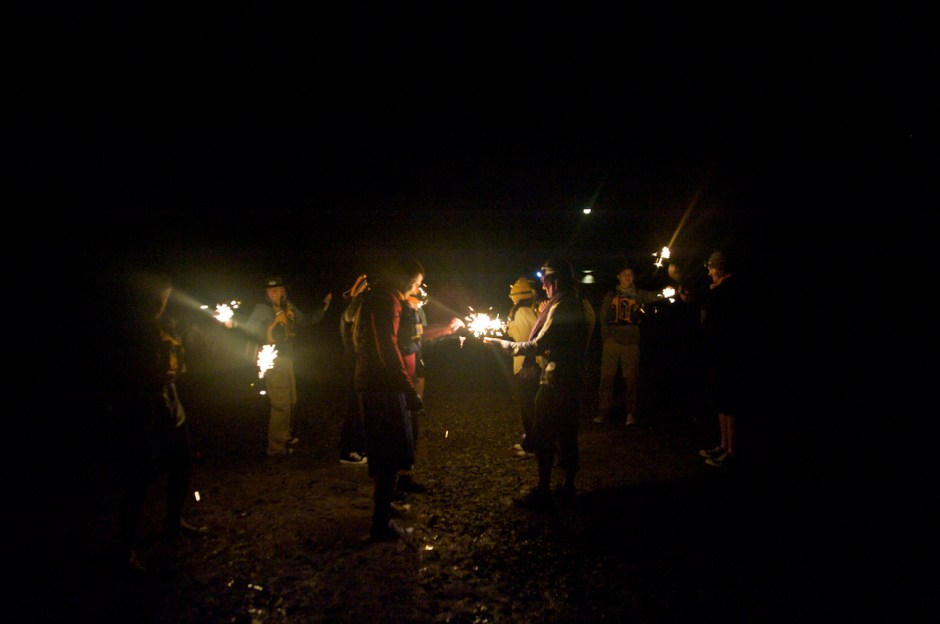

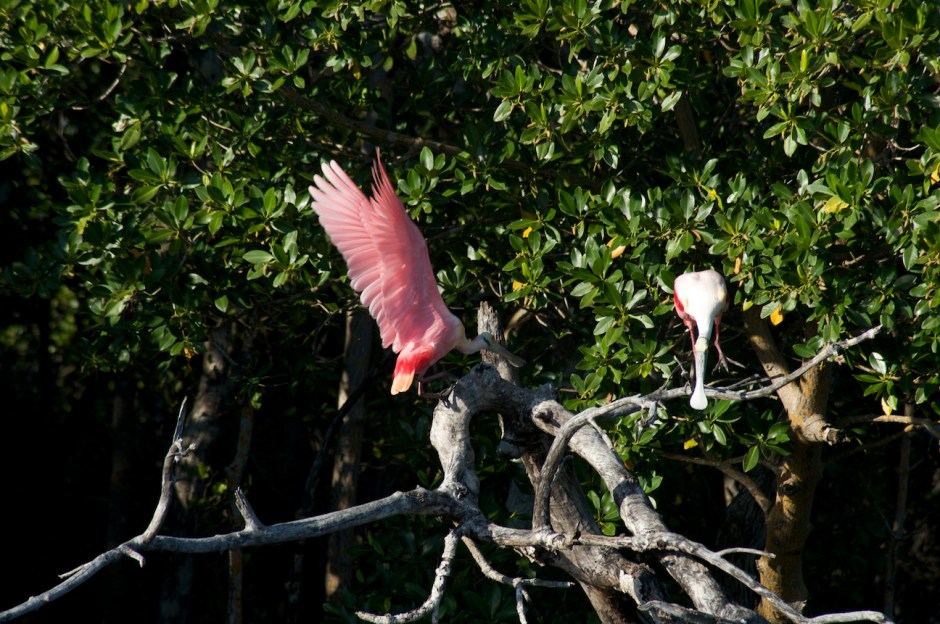
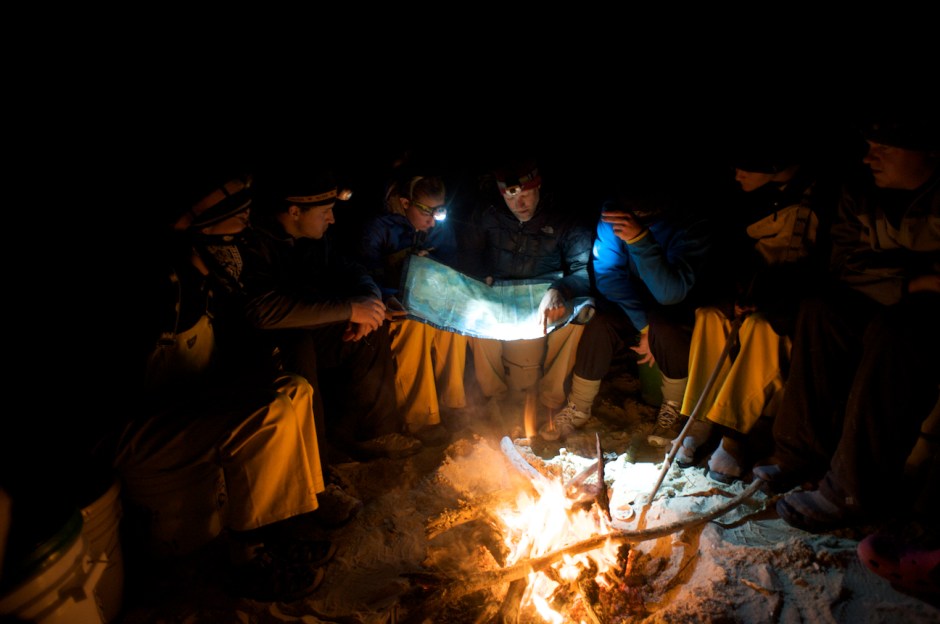
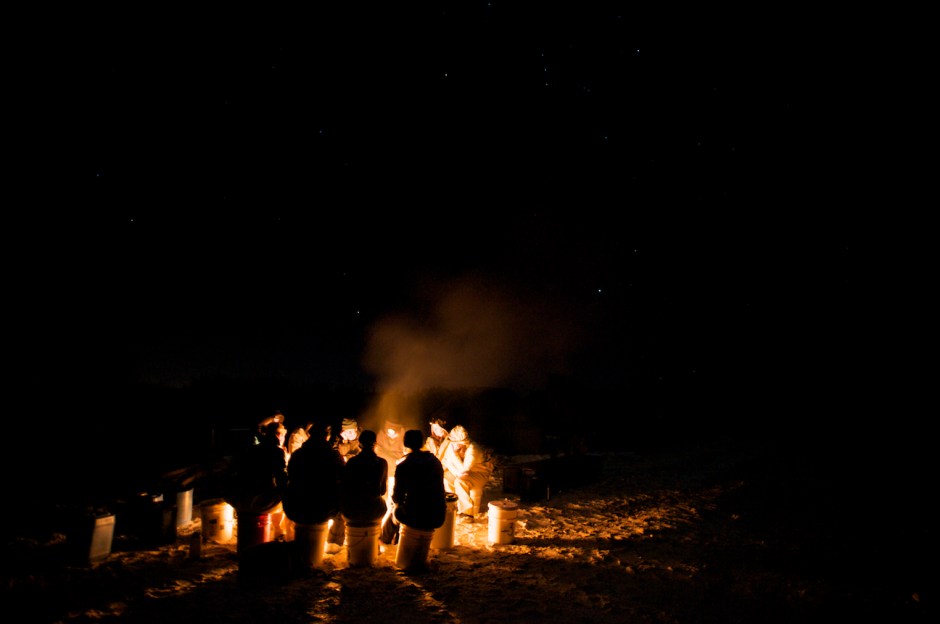
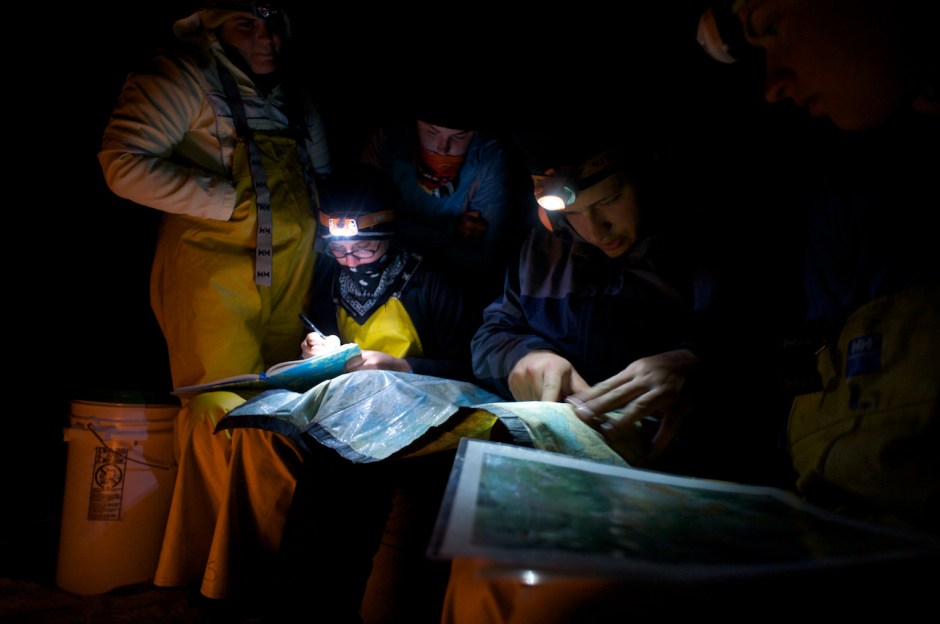
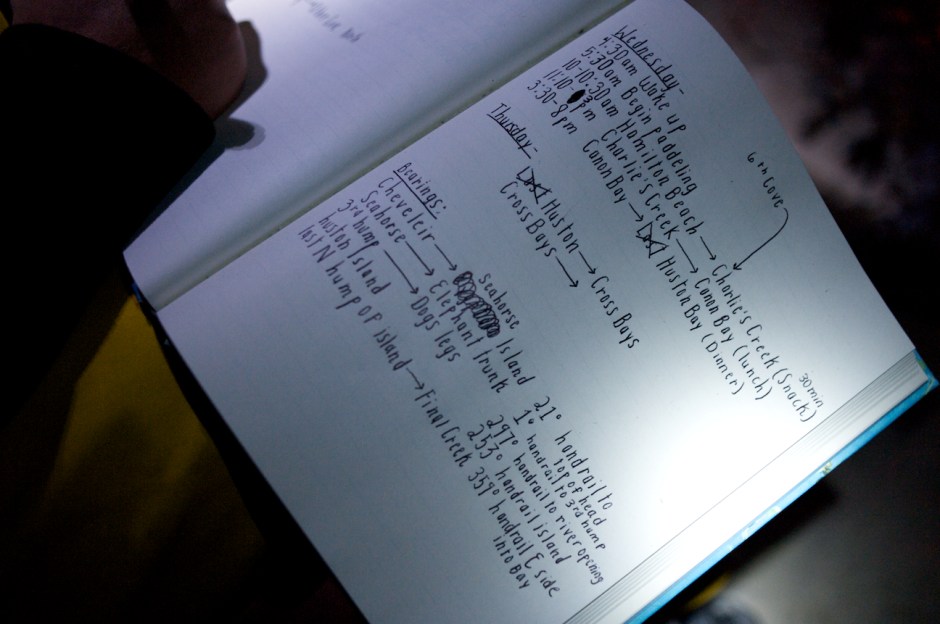

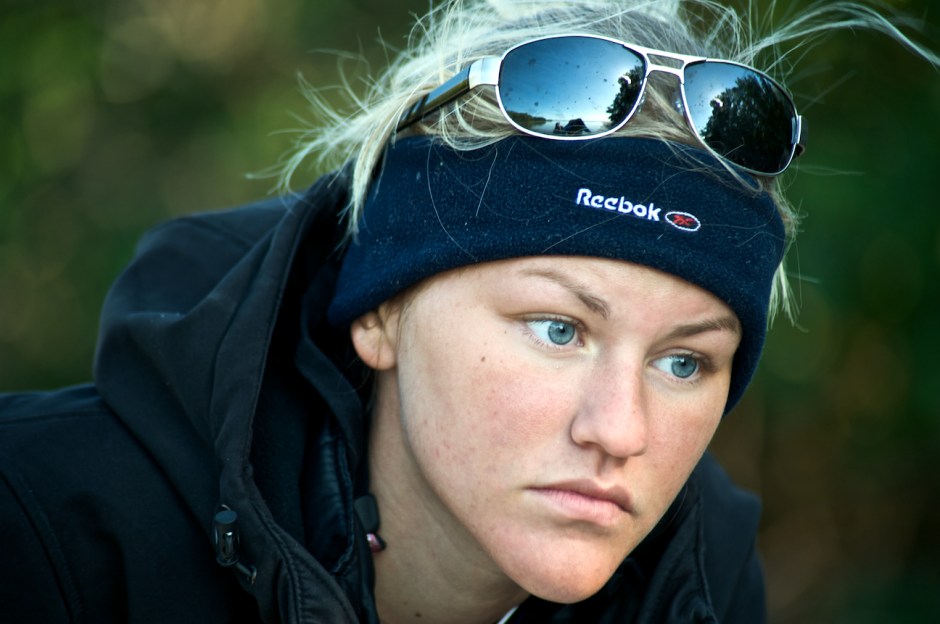
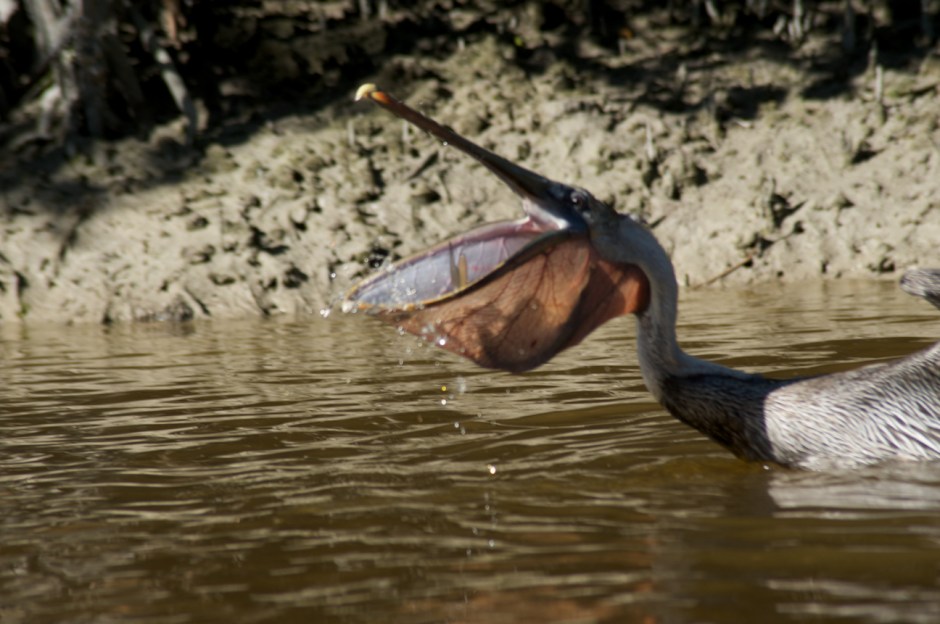
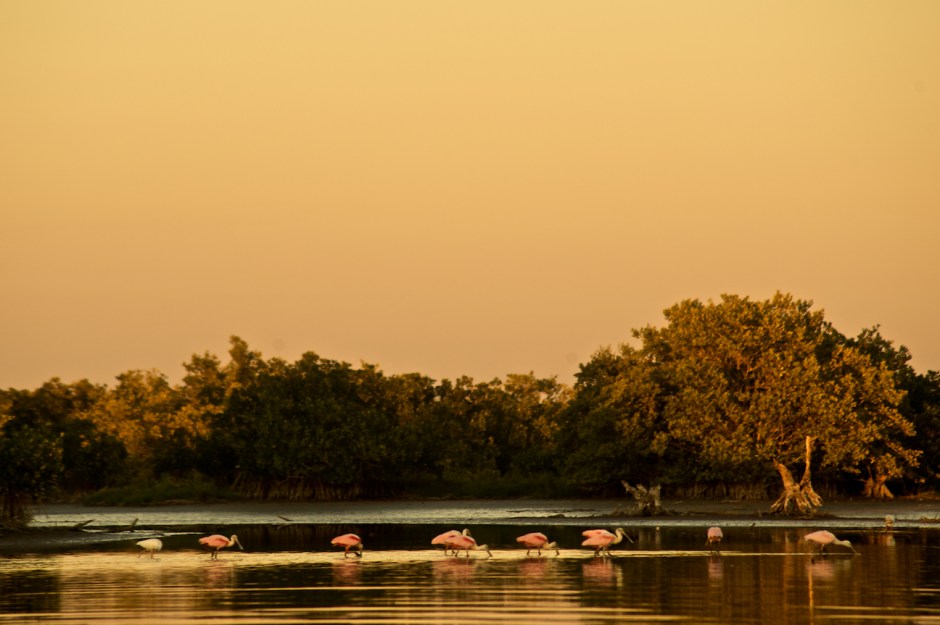
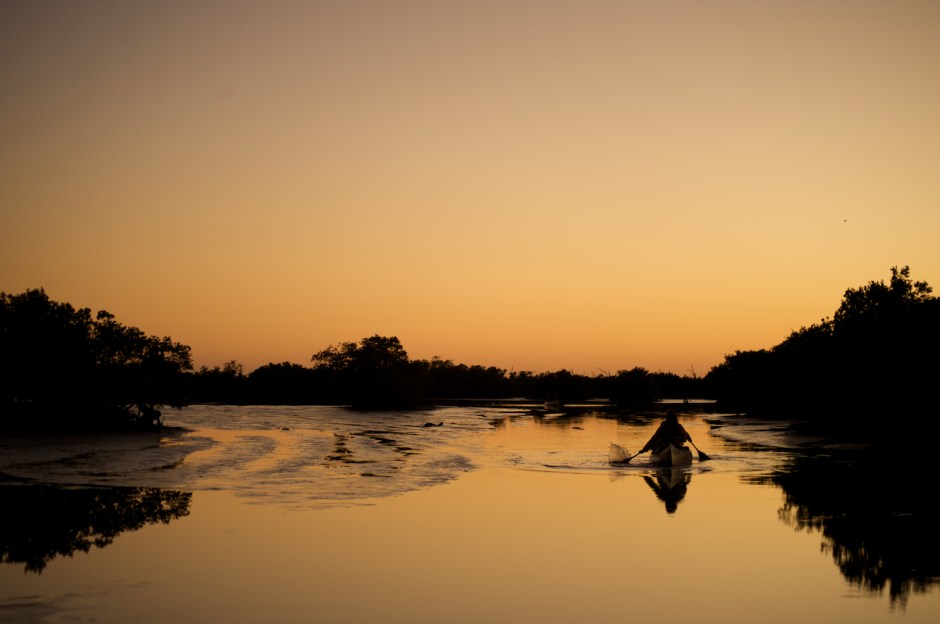
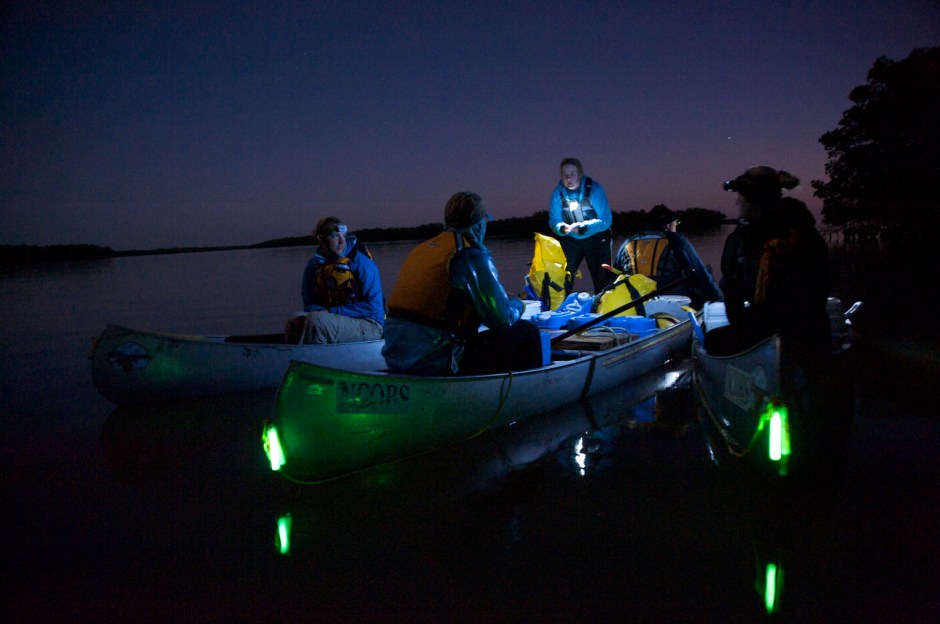

Pingback: The Best of NomadRuss – The 2014 Edition | nomadruss in words and photos
Wow amazing! Thank you so much for sharing! What a cool experience!